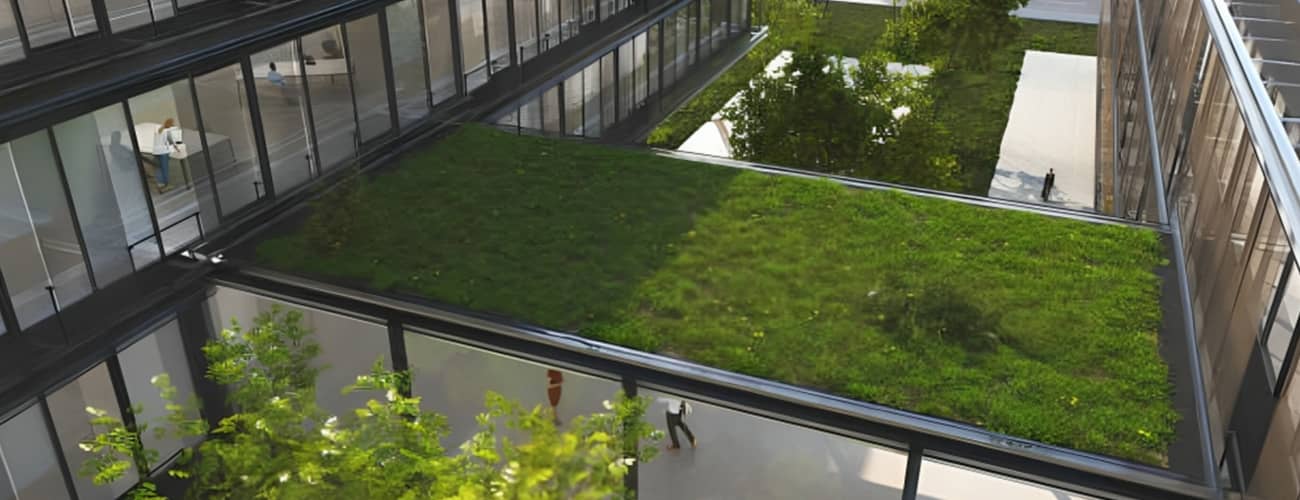Green Buildings: What Are They And How Does It Contribute To The Sustainable Environment

Introduction
In the wake of climate change, the construction industry is undergoing a transformative shift towards sustainability. One significant stride in this direction is the emergence of green buildings, structures designed with environmental responsibility in mind. This blog delves into the concept of green buildings, their design principles, and the manifold ways they contribute to environmental preservation.
Key Components of Green Building Design
Green building design encompasses a variety of elements aimed at reducing the overall environmental impact of a structure. From energy efficiency to materials selection, every aspect is carefully considered to minimize resource consumption and promote sustainability.
Sustainable Materials and Technologies
One of the cornerstones of green building is the use of sustainable materials and technologies. This includes utilizing renewable resources, such as bamboo or recycled steel, and incorporating energy-efficient systems like solar panels or passive heating and cooling.
Energy Efficiency Measures
Energy efficiency lies at the heart of green building practices. From advanced insulation to high-efficiency HVAC systems, these measures aim to reduce energy consumption and lower carbon emissions, thus mitigating climate change.
Water Conservation Strategies
Water is a precious resource, and green buildings implement various strategies to minimize water wastage. This includes the use of low-flow fixtures, rainwater harvesting systems, and drought-resistant landscaping to conserve water resources effectively.
The Environmental Impact of Green Buildings
Reduced Carbon Emissions
By incorporating energy-efficient technologies and renewable energy sources, green buildings significantly reduce carbon emissions associated with traditional construction and operation. This helps combat climate change and contributes to a healthier environment.
Conservation of Natural Resources
Green buildings minimize resource consumption by using sustainable materials, reducing waste generation, and implementing efficient design and construction practices. This conservation ethos helps preserve natural resources for future generations.
Mitigation of Urban Heat Island Effect
Traditional urban areas tend to trap heat, creating what is known as the urban heat island effect. Green buildings, with their focus on reflective surfaces, green roofs, and urban vegetation, help mitigate this phenomenon by reducing heat absorption and improving overall thermal comfort.
Biodiversity Preservation
Green buildings play a crucial role in preserving local biodiversity by incorporating green spaces, such as rooftop gardens and native landscaping. These habitats provide refuge for wildlife and promote ecological balance in urban environments.
Waste Reduction and Management
From construction to operation, green buildings prioritize waste reduction and proper waste management practices. This includes recycling construction materials, composting organic waste, and implementing efficient waste disposal systems to minimize environmental impact.
Promoting Sustainable Urban Development
Integrating Green Spaces
Green buildings contribute to sustainable urban development by incorporating green spaces into their design. These spaces not only enhance aesthetic appeal but also provide recreational areas for residents and improve overall air quality.
Enhancing Community Well-being
Sustainable urban development goes beyond environmental considerations to encompass social and economic aspects. Green buildings promote community well-being by fostering social interaction, supporting local economies, and creating healthier living environments.
Economic Benefits of Green Buildings
Contrary to popular belief, green buildings offer significant economic benefits in addition to their environmental advantages. From lower operating costs to increased property values and improved occupant health and productivity, the financial incentives for green building are substantial.
Green Building Certification Systems
To validate their sustainability credentials, many green buildings undergo certification through programs like LEED (Leadership in Energy and Environmental Design) or BREEAM (Building Research Establishment Environmental Assessment Method). These certification systems provide independent verification of a building's environmental performance.
Conclusion
Green buildings are not just a trend; they are a crucial component of a sustainable future. By prioritizing energy efficiency, resource conservation, and occupant well-being, green buildings play a pivotal role in mitigating climate change, promoting sustainable urban development, and creating healthier, more resilient communities. The property of Godrej Khalapur practices environmental sustainability. Moreover, its proximity to popular hill stations like Lonavala and Mahabaleshwar provides residents with a delightful weekend getaway, allowing them to escape to serene and picturesque surroundings.